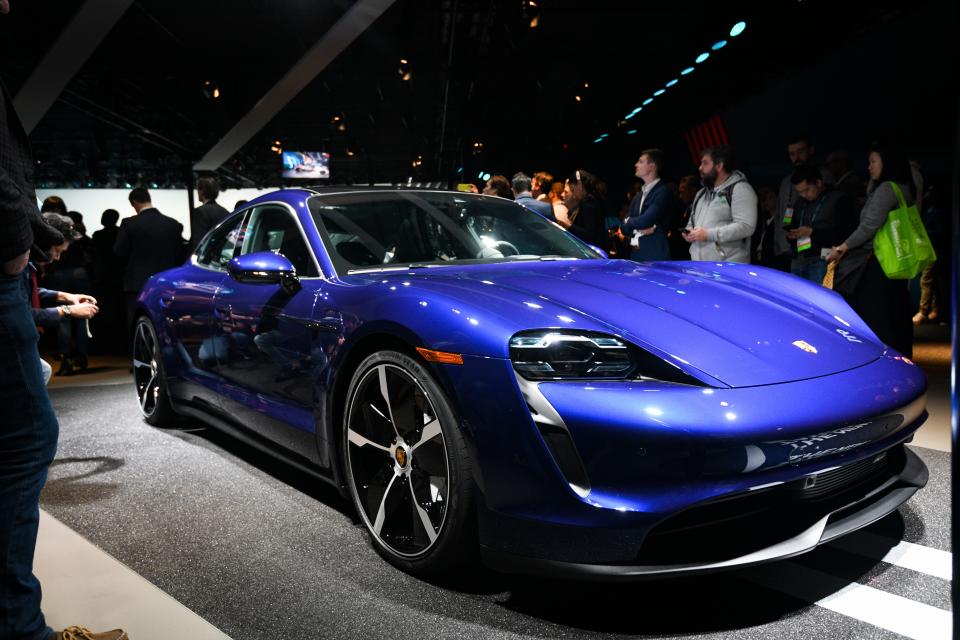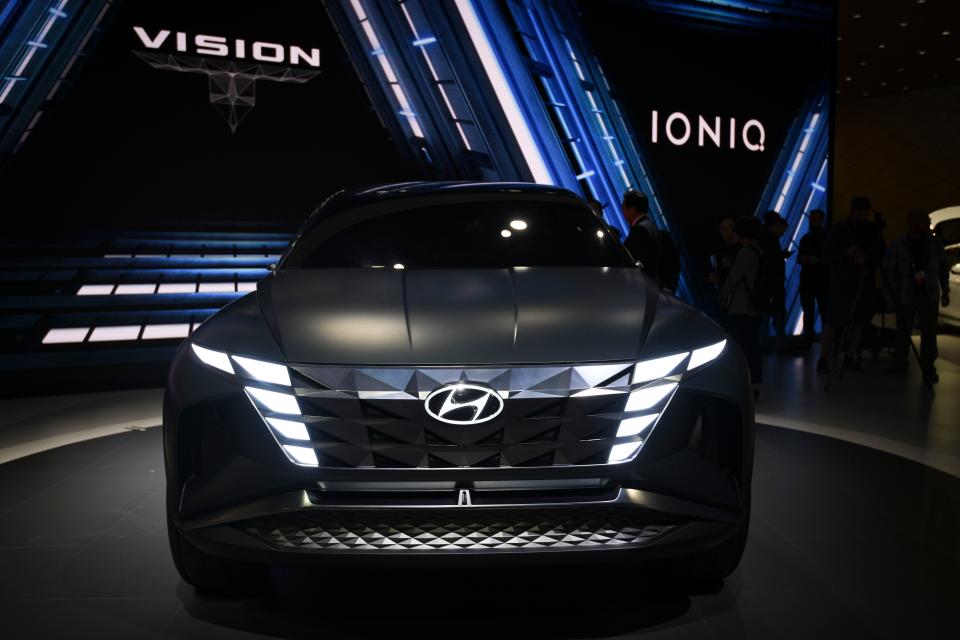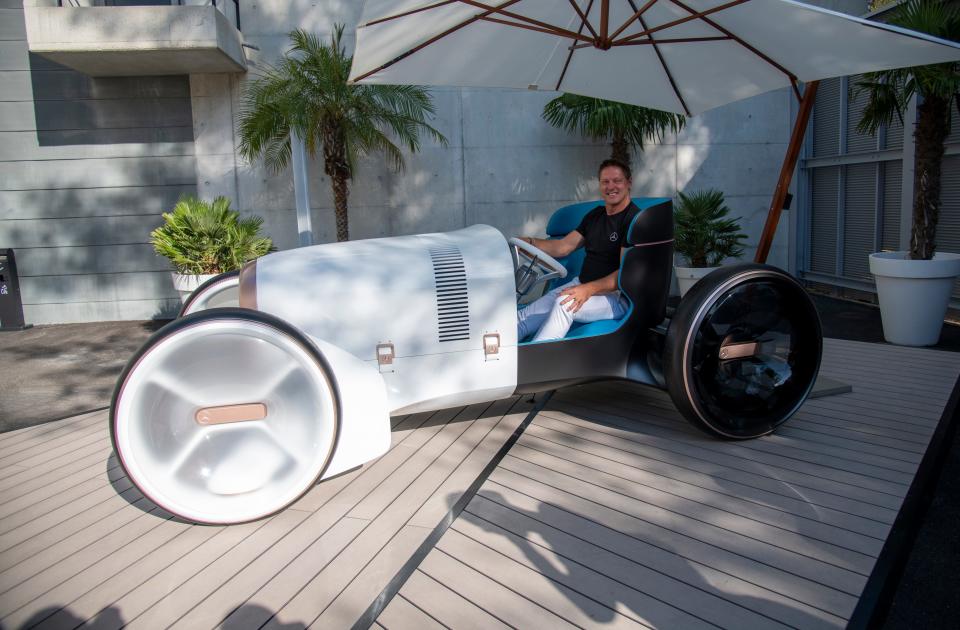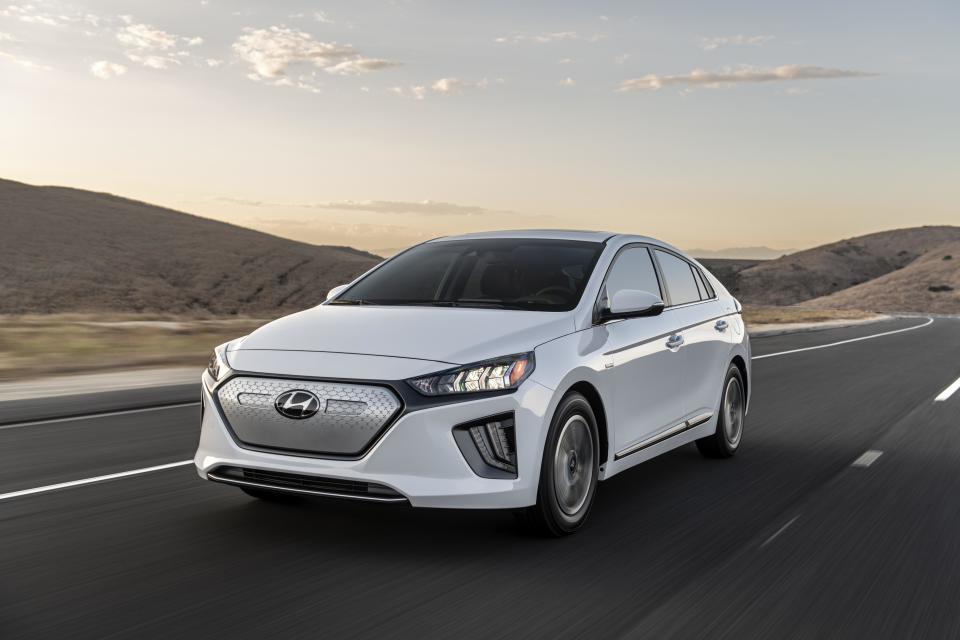You'll flip over these 3 new cars unveiled at the L.A. Auto Show, but 3 others fell short
LOS ANGELES -- A bevy of new SUVs, some interesting high-performance cars and a few heart-stopping prototypes.
That pretty much sums up the next generation of vehicles unveiled this week at the Los Angeles Auto Show. And it sets the tone for the other major auto shows, where dozens of other models will first be seen, in Chicago, New York and Detroit through next spring.
For the L.A. show's media preview, here is our picks for hits and misses.
Hits
Porsche Taycan 4S
For those who dream of owning this electrically powered Porsche sedan comes a cheaper version -- and one that is just as desirable.
The 4S can deliver the electric equivalent of 522 horsepower. As if that isn't enough, there's an optional battery system that delivers an extra jolt, boosting that horsepower to an immense 562 for sudden acceleration power. Thus, the 4S can rocket from zero to 60 mph in 3.8 seconds. Top speed is 155 mph.

What's captivating about this car isn't just raw power. It's a sweet profile that makes it instantly recognizable as a Porsche design while still seeming entirely fresh. It's a look that says "Take me away -- now!"
More: 'Pack mules': Land Rover Defender's return at Los Angeles Auto Show thrills off-road enthusiasts
Perhaps best of all, Taycan 4S is a relative bargain at a starting price of $103,800 at least compared to the previously announced more upscale versions, the Taycan Turbo at $150,900 and the Taycan S at $185,000. Don't have the cash? You’ve got until next spring -- when the 4S arrives in showrooms -- to save up.
Kia Seltos
A new SUV model, the Kia Seltos, isn't one of the great lookers at the show, but we include it among our hits because it's well done overall, nicely packaged and a bargain with a starting price of less than $22,000, including all-wheel-drive.
The Seltos shows how automakers are so anxious to market new SUVs that they will risk cannibalizing sales from their existing lineup. Seltos is a compact SUV that will compete directly against one of Kia's best-known and most quirky models, the Soul.
The Soul is a bit of a combination of a car and a crossover, while Seltos is intended to be more of a pure SUV, explained Michael Cole, president of Kia Motors America.
Seltos has some features that few other compact crossovers can match, including the six-color mood lighting that has been a hit in the youth-oriented Soul. It also will have more cargo room than a Toyota RAV4 or Subaru Crosstrek, two of its biggest rivals. For pep, Seltos' 2-liter four-cylinder engine produces 146 horsepower.
The SUV comes to showrooms in the first quarter of 2020.

Hyundai Vision T
Every auto show needs a few new concept cars that offer a peek into the future, and Hyundai supplied one of the better ones.
It's the Vision T, a carbon-black plug-in hybrid SUV. We expect its simple yet captivating style will show up for years in the next generation of Hyundai crossovers.
As opposed to the more wild concepts, this one is understated. Downright elegant, really. The Vision T's lines are subtle and pure. It's the kind of clean design at which German automakers seem to excel, especially Volkswagen. The front is a little crazy, though, with a geometric design for the grille and a stacked array of headlights.
But hey, it will turn heads -- and that's the point.
Misses

Vision Mercedes Simplex
This is one of those design exercises that must have sounded cool when it was dreamed up and probably elicited a few groans when it was finally executed.
The idea was to bring a 1901 Mercedes back to life as it would be envisioned in 2020. Mercedes doesn't even attempt to call it a concept car. Rather, it's a "sculpture," which we take to mean that it may look like a car, but don't count on ever seeing it move.
For those who follow automotive history, the old car was the Mercedes 35 PS developed by Daimler, Mercedes-Benz' parent company, for Race Week in Nice, France at the turn of the last century. Mercedes says its simple design made it basically the first modern car in what was otherwise the horseless carriage era.
To give it a 118-year update, the wheels are now are high-tech discs, white in front, black in back. The rest of the car similarly has a high-tech look, even a simple blue seat for the cockpit.
"OK," we said. But was this really worth the effort?

Hyundai Ioniq Electric
Given the other innovative things that Hyundai has done lately, we expected more from the next generation of the Ioniq Electric.
Yes, its battery range was boosted from 124 miles in the current version to 170 miles per charge, besting the Nissan Leaf. But that's still short of the 200-plus mile range of rivals like Chevrolet Bolt and all Tesla models, which is quickly becoming the defacto benchmark for EVs. (We are impressed, though, that Ioniq's battery can be recharged to the 80% level in less than an hour from a fast charger, according to Hyundai).
And yes, there's nothing ugly about it its design. But there's nothing especially interesting about it either. It's not memorable.
Plus, we think the plastic panel where the grille would normally be looked cheap and cheesy.
Toyota Mirai
U.S. drivers still seem unimpressed, but Toyota, along with Honda and Hyundai, continues to pursue the hydrogen fuel-cell dream that is yet to catch on.
Each generation of fuel-cell vehicles improves technologically. Now Toyota hopes its new Mirai sedan will have more appeal with startlingly better looks. Want a stealth Lexus? This may be it.
There's no getting over the polarizing looks of the outgoing Mirai. (Polarizing, in auto-show speak, means ugly). The new one goes to the opposite end of the design spectrum with modern looks that some compare to the Toyota Avalon and that seems to fall too far on the bland side.
Now it doesn't stand out enough. If hydrogen-powered cars are going to catch on, they need to be distinctive on the highway so that motorists can start to say "There goes one! And there goes another!"
California has 38 hydrogen fueling stations that can fuel a Mirai, so don't feel bad if you live in another state and have never seen one. Toyota only sold 6,000 Mirais since 2015 which, executives point out, is about equal to the number of RAV4s that fly off dealership lots in a single week.
This article originally appeared on USA TODAY: L.A. Auto Show: 3 cars to love, 3 not so great

